Why Sheet Metal Stamping Computer Case?
 Jul 26,2022
Jul 26,2022

Sheet metal stamping operation is relatively simple, which is easy to organize production, especially in the case of mass production, the high-speed press can produce hundreds of thousands of pieces per minute. So it is an efficient processing method.
Sheet metal stamping generally does not need to heat the blank, nor does it cut a lot of metal like cutting, so it not only saves energy, but also saves metal.
Sheet metal stamping products are widely used in aerospace, military industry, machinery, agricultural machinery, electronics, information, railway, post and telecommunications, transportation, chemical industry, medical appliances, household appliances and light industry, and 80% of bicycles, sewing machines and watches are stamping parts; 90% of TV sets, tape recorders and video cameras are stampings; There are also food metal tank shells, steel boilers, enamel basins and bowls and stainless steel tableware, all of which are stamping products using molds; Even the hardware of the computer cannot lack stamping parts. Today, we will talk about some details of sheet metal stamping computer chassis, which are closely related to our daily life.
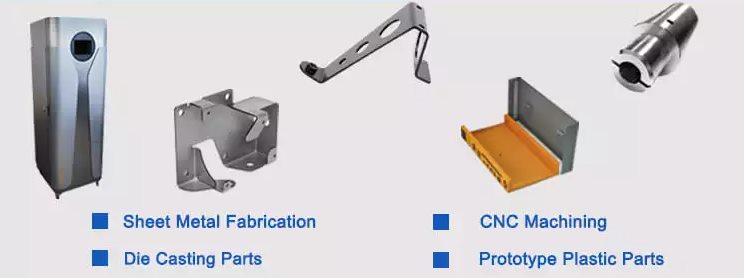
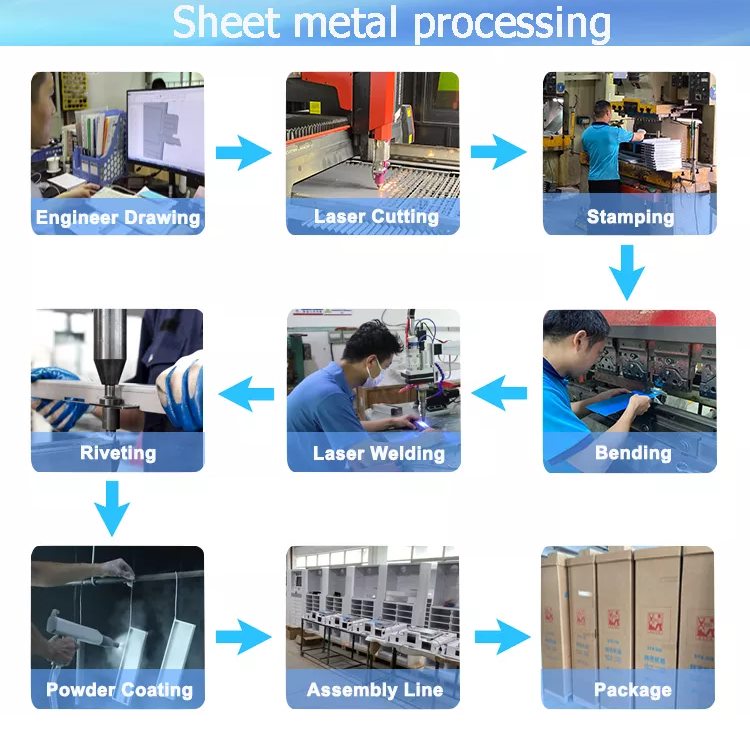
What are the parts of computer case?
The composition of the computer case: including the shell, bracket, the panel of various switches, indicators, etc.. Shell made of steel and plastic combination, high hardness, mainly to protect the role of the internal components of the chassis; bracket is mainly used to fix the motherboard, power supply and various drives.
Case as part of the computer accessories, it plays a major role in placing and fixing the computer accessories, play a supporting and protective role, in addition, the computer case has an important role in the shielding of electromagnetic radiation. Appearance and materials are the most basic characteristics of a chassis, the appearance of a chassis directly determine whether the first condition of user acceptance.
Aluminum chassis
Aluminum chassis quality hardness are more qualified, generally speaking, aluminum alloy usually gives people a thin, low hardness of the feeling, such an understanding is one-sided, and in the alloy after adding magnesium, magnesium aluminum alloy plate hardness will be greatly enhanced, compared with ordinary steel is not bad. And high with the full aluminum chassis shell panel material is often several times the thickness of the general steel chassis shell, the degree of sturdiness will be higher, this point is incomparable steel chassis.
We all know that the density of aluminum is very small, only 2.7 g / cm3. The specific heat capacity of aluminum is 0.88*1000J/kg, while the density of steel is 7.9 g/cm3. Specific heat capacity is about 0.46 * 1000J / kg, which indicates that in the same absorption of a certain amount of energy, aluminum chassis temperature rise higher, so the surface of the aluminum chassis will produce a hot feeling; the same reason the higher the temperature of the object, external heat radiation, heat diffusion is faster, so absorb the same energy heat, aluminum chassis than steel chassis heat dissipation faster.
Steel plate chassis
The advantage of steel plate enclosures is that they are more resistant to corrosion. As you know, steel is susceptible to corrosion when exposed to relatively moist air, and galvanized steel sheets can rely on the formation of a dense oxide protective layer of metallic zinc in the air to protect the internal steel structure. In the case of scratches, the relatively active galvanized part can be used as a sacrificial anode to slow down the corrosion of steel, galvanized layer of relatively thick steel corrosion resistance is stronger. But this type of chassis in heat dissipation and appearance design are worse than the aluminum chassis.
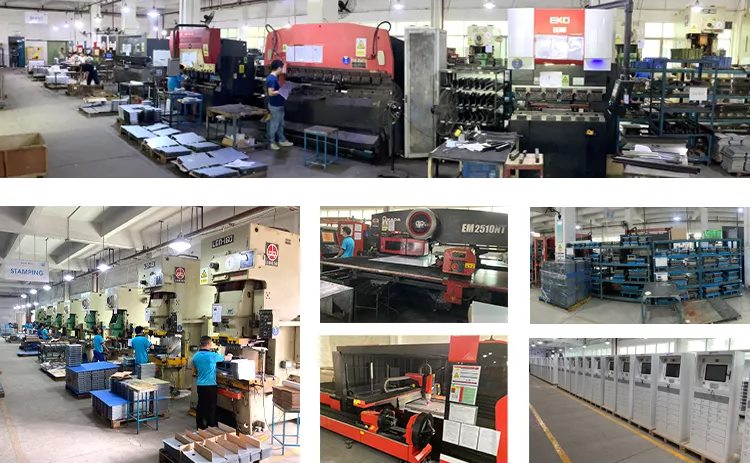
What process are used for manufacture of computer case?
We are all familiar with computers and use them often. The main case of our computer is made by stamping process. We all know that the case is a closed box, stamping can not be reached at once, so the case is combined by stamping the plates of each side in stages.
The following is an analysis of the process of the chassis shell:
Material Analysi:
The main material of the main chassis is plated steel and Aluminum alloy profile.
The raw material to make the chassis, according to the different requirements of the chassis using different thickness and hardness of steel plate material. Steel plate has electroplated clang steel plate, electro galvanized steel plate, etc. As the main material for bright body parts of electrical appliances, communication and other products, it maintains the excellent properties of SPCC (cold rolled plate) such as good strength, plasticity and toughness, and its plating has good fingerprint and corrosion resistance, and does not contain any trace elements that are harmful to the bonding force of the binder or paint performance, which is conducive to environmental protection and is widely used.
Aluminum alloy profile is an emerging material of chassis in recent years, because the strength of aluminum alloy is much higher than the same thickness of steel, so the chassis made of it also has the advantages of high strength, resistance to oscillation, resistance to impact. Moreover, the density of aluminum alloy itself is less than steel, and the oxidation resistance is also better, so the process is simple and convenient, and some extra steps can be eliminated.
In the stamping, aluminum profiles have the following unique processing characteristics, and the processing of other chassis will be different: First, the panels located on both sides of the front and rear of the chassis can be disassembled, and its fixed corner can also be made into a whole or subassembled according to customer requirements; Second, the surface of the chassis should be successively painted, phosphating and oxidation steps to achieve a more beautiful appearance of the chassis and optimize its anti-corrosion properties; Third, in the The installation of circuit boards in the chassis, the use of special point welding will be installed in the rail slot, according to the needs of flexible selection of installation position, so that it is more convenient to plug and unplug.
To make the aluminum alloy chassis more exquisite, you need to focus on the surface treatment of the chassis. Generally speaking, it can be oxidized by chemical oxidation, electrochemical oxidation and other methods to suit the needs of some electronic devices with high requirements for electromagnetic shielding of the chassis shell.
Now, some high-grade chassis are using aluminum alloy as its chassis material, want to change the quality of the chassis from the selection of materials, so that it can occupy a place in the competitive market. However, the price of aluminum alloy chassis is now generally higher.
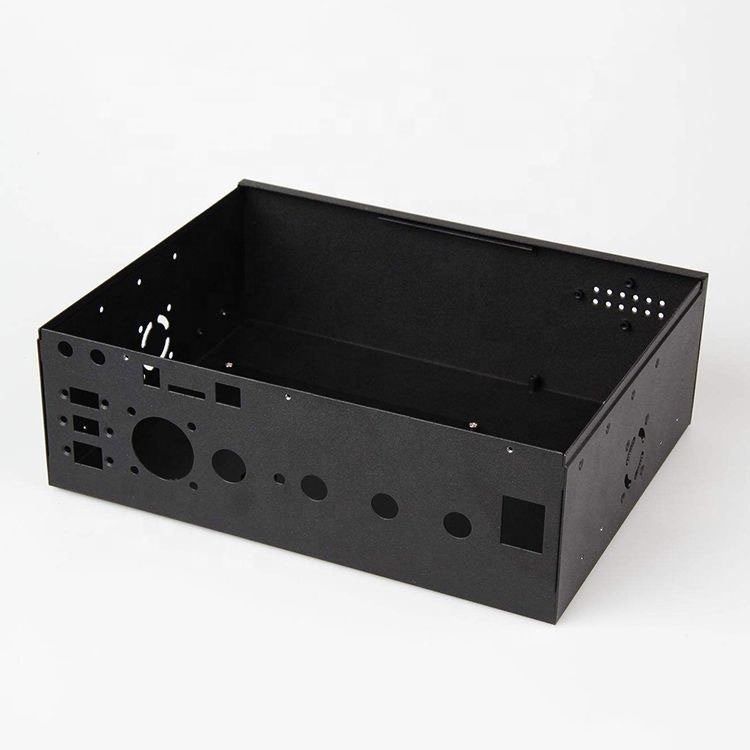
Production analysis:
The steel plates to be used are first cut according to the size of the desired chassis, and cut into a piece of size that can be filled into the stamping lathe. After cutting the steel plates of various sizes, these plates are transported to the stamping shop.
Due to the complex structure of the side panel of the chassis, it cannot be formed by stamping at one time, and it needs to be punched several times to cut the concave and convex, and the holes to cut off the excess material to get the required form.
After completing the stamping, the side panels of the chassis are then bent, and finally the completed stamping side panels are assembled into the overall chassis.
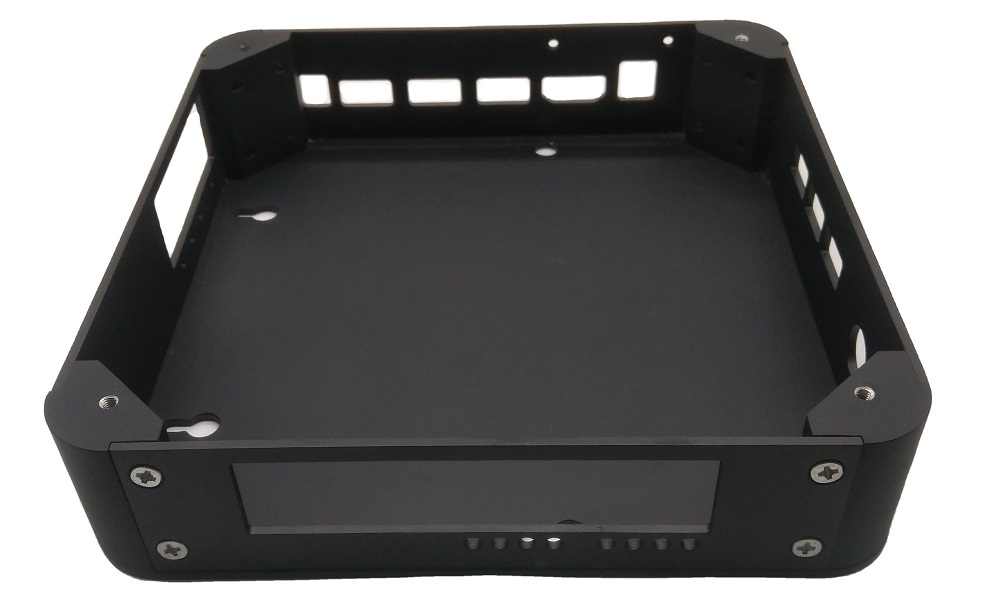
What is a stamping process?
Stamping is a forming process that relies on presses and dies to apply external forces to plates, strips, pipes and profiles to produce plastic deformation or separation to obtain workpieces of the desired shape and size (stamped parts). Stamping and forging are both plastic processing (or pressure processing), and together they are called forging and pressing.
What are the advantages and disadvantages of metal stamping?
The structure of stamping dies is divided into:
Die handle, upper die holder, convex die, concave die, lower die holder, push out mechanism, etc.
Stamping:
In stamping, the cut steel plate enters the mold, i.e. fills into the concave die, and then the convex die fixed on the lathe moves downward to squeeze the material by applying the plastic deformation of the material itself to achieve the required shape.
Advantages of stamping:
1 High production efficiency, easy to mechanize and automate.
2. High material utilization.
3, High precision, dimensional stability, good interchangeability.
4, Easy to obtain the shape of complex parts.
5, Simple operation, easy to organize production.
6、Low product cost in mass production
Disadvantages of stamping:
High mold requirements, complex manufacturing, long cycle time, high manufacturing costs, not suitable for small batch production.
 Tel/WeChat:
Tel/WeChat:  Email:
Email: 
 Home
Home
 What is Type 3 Hard Anodizing: Thickness and Process
What is Type 3 Hard Anodizing: Thickness and Process 







